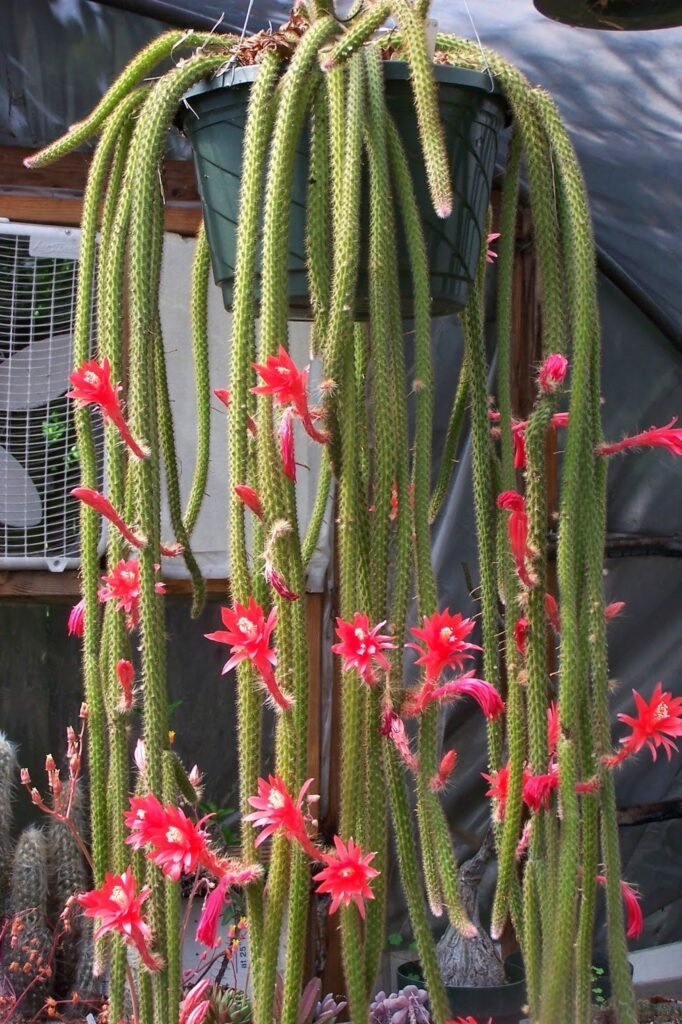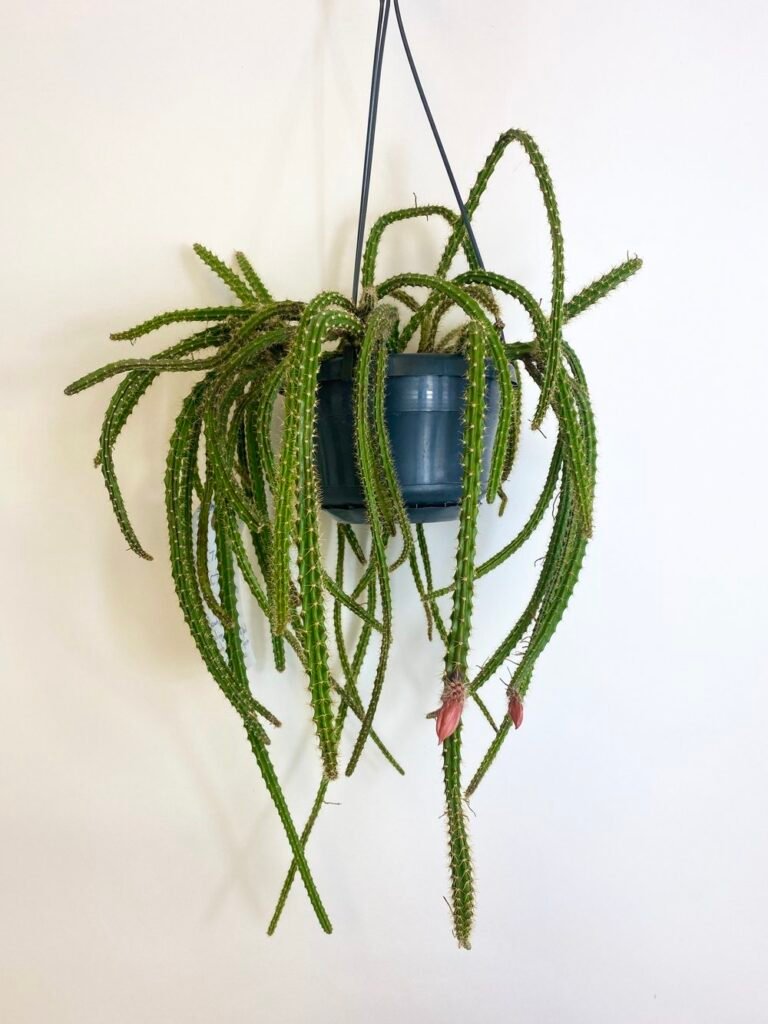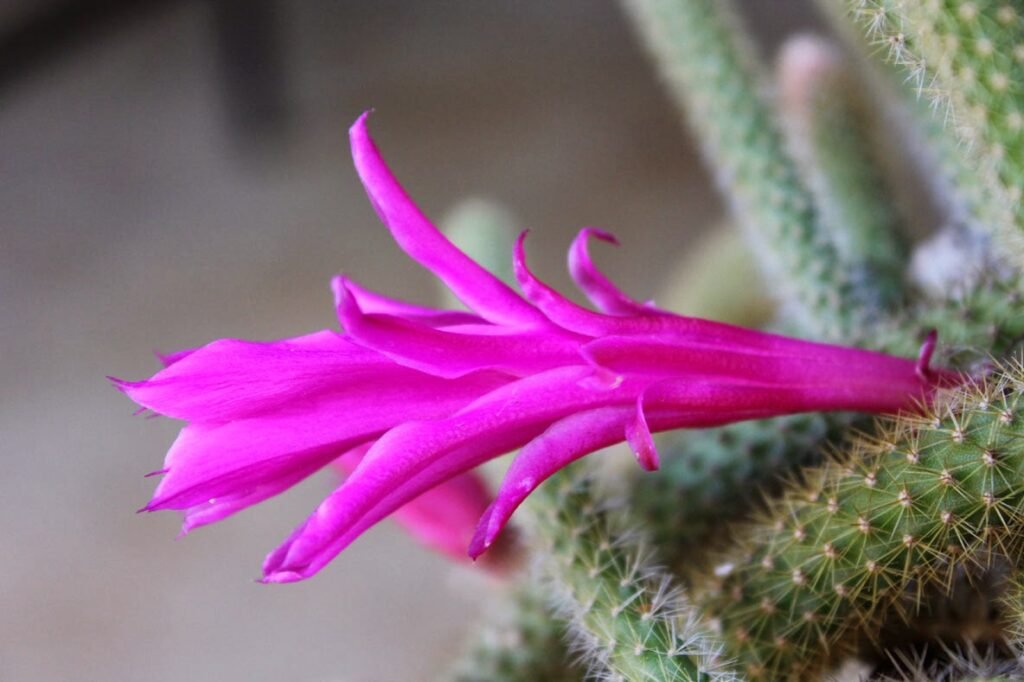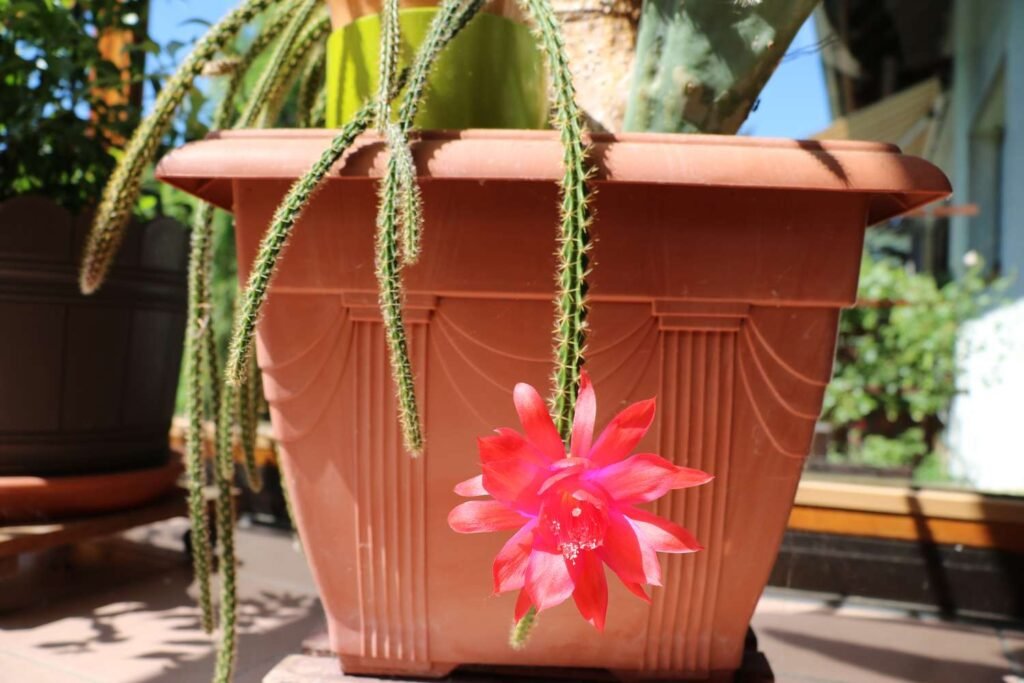Categories: Succulents, Hanging Plants, Drought-Tolerant Plants, Unusual Houseplants, Flowering Cacti
Rat Tail Cactus, Aporocactus flagelliformis, hanging cactus, trailing succulents, exotic houseplants
Rat Tail Cactus: Mastering the Care of This Unique Trailing Succulent

Introduction
Meet the Rat Tail Cactus (Aporocactus flagelliformis), a fascinating and unusual member of the cactus family that’s sure to catch the eye of any plant enthusiast. With its long, trailing stems and vibrant flowers, this plant brings a touch of the exotic to any indoor or outdoor space. In this comprehensive guide, we’ll explore everything you need to know about cultivating and caring for this distinctive succulent.
History and Origin
Native to Mexico, the Rat Tail Cactus has been cultivated for centuries, both for its ornamental value and for its traditional medicinal uses. It was first described botanically in 1753 by Carl Linnaeus, the father of modern taxonomy. The genus Aporocactus is derived from the Greek words “aporos” (impenetrable) and “kaktos” (thistle), while the species name “flagelliformis” refers to its whip-like stems.
Plant Description
The Rat Tail Cactus is characterized by:
- Long, trailing stems that can grow up to 3-6 feet in length
- Thin, cylindrical stems covered in small spines
- Vibrant, tubular flowers in shades of pink, red, or purple
- Flowers typically appear in spring and can last for several days
- Multiple stems growing from a central point, creating a cascading effect

Plant Care
Light Requirements
Rat Tail Cacti prefer bright, indirect light. They can tolerate some direct sunlight, especially in the morning, but should be protected from harsh afternoon sun to prevent scorching.
Watering Needs
Like most cacti, the Rat Tail is drought-tolerant. Water thoroughly when the soil is completely dry, typically every 2-3 weeks in summer and less frequently in winter. Ensure excellent drainage to prevent root rot.
Humidity
Adapts well to average home humidity levels. High humidity is not necessary and can potentially lead to fungal issues.
Temperature
Prefers warm temperatures between 70-80°F (21-27°C) during the growing season. Can tolerate cooler temperatures down to 50°F (10°C) in winter, but protect from frost.
Soil Requirements
Use a well-draining cactus or succulent potting mix. You can create your own by mixing regular potting soil with coarse sand and perlite.
Fertilizer
Feed monthly during the growing season (spring and summer) with a balanced, water-soluble fertilizer diluted to half strength. Stop fertilizing in fall and winter.

Pruning
Pruning is generally not necessary for Rat Tail Cacti, but you can:
- Remove any dead, damaged, or diseased stems at the base.
- Trim back overly long stems if desired, but this may reduce flowering potential.
- Use clean, sharp scissors or pruning shears to avoid damaging the plant.
Propagation
Rat Tail Cacti are easy to propagate:
- Stem cuttings:
- Cut a healthy stem segment 4-6 inches long.
- Allow the cut end to callus for a few days.
- Plant the callused end in well-draining cactus soil.
- Water sparingly until roots develop.
- Seeds:
- Sow seeds in a well-draining cactus mix.
- Keep soil lightly moist and warm until germination.
- This method is slower but can produce many plants.
Potting and Repotting
- Choose a hanging basket or a pot with excellent drainage.
- Repot every 2-3 years or when the plant outgrows its current container.
- Best time to repot is in spring, at the beginning of the growing season.
- When repotting, be careful of the spines – use thick gloves or newspaper to handle the plant.
Flowering
To encourage blooming:
- Provide a period of cooler temperatures (around 50°F/10°C) in winter.
- Ensure the plant receives enough light – bright, indirect light is ideal.
- Avoid overwatering or over-fertilizing, which can promote vegetative growth at the expense of flowers.

Pests and Diseases
Common Pests
- Mealybugs
- Scale insects
- Spider mites
Treat infestations with insecticidal soap or neem oil, being careful not to oversaturate the plant.
Diseases
- Root rot (from overwatering)
- Fungal infections
Prevent by ensuring good air circulation and avoiding overwatering.
Common Problems
- Shriveling stems: Usually indicates underwatering. Increase watering frequency.
- Soft, mushy stems: Often a sign of overwatering or poor drainage. Reduce watering and check soil drainage.
- Pale, yellowing stems: Could indicate too much direct sunlight. Move to a slightly shadier spot.
- Lack of flowers: Insufficient light or improper winter rest period.
Uses and Benefits
- Ornamental: Ideal for hanging baskets or as a trailing plant in mixed succulent arrangements.
- Air purification: Like many plants, it can help improve indoor air quality.
- Conversation piece: Its unique appearance makes it a great talking point.
- Low maintenance: Perfect for busy individuals or those new to plant care.

FAQs
Is Rat Tail Cactus toxic?
While not highly toxic, the spines can cause skin irritation. Keep away from children and pets.
How fast does Rat Tail Cactus grow?
It’s a relatively slow grower, adding a few inches each year under ideal conditions.
Can Rat Tail Cactus be grown outdoors?
Yes, in USDA zones 9-11. In colder areas, it can be grown outdoors in summer and brought inside for winter.
Why isn’t my Rat Tail Cactus flowering?
Lack of flowering can be due to insufficient light, improper winter rest, or the plant being too young.
Tips for Success
- Provide support for young plants until they develop strong trailing stems.
- Rotate the plant regularly if it’s not in a hanging basket to ensure even growth.
- Handle with care – the small spines can be irritating to skin.
- In very hot climates, provide some afternoon shade to prevent sunburn.
- Consider using a moisture meter to avoid overwatering.
Quick Facts
| Attribute | Detail |
|---|---|
| Scientific Name | Aporocactus flagelliformis |
| Common Names | Rat Tail Cactus, Mouse Tail Cactus |
| Native Region | Mexico |
| Plant Type | Trailing succulent cactus |
| Height/Length | 3-6 feet (90-180 cm) trailing |
| Light Needs | Bright, indirect light |
| Water Needs | Low, drought-tolerant |
| Humidity | Low to average |
| Toxicity | Low toxicity, but spines can irritate |
| Propagation | Stem cuttings, seeds |
| Flowering Season | Spring to early summer |
Conclusion
The Rat Tail Cactus is a fascinating and rewarding plant to grow, offering a unique blend of trailing stems and vibrant flowers. Its low maintenance requirements and drought tolerance make it an excellent choice for both novice and experienced plant enthusiasts. Whether you’re looking to add interest to a hanging basket, create a striking centerpiece, or expand your succulent collection, the Rat Tail Cactus is sure to impress. With the care tips and information provided in this guide, you’re well-equipped to grow and nurture this distinctive cactus. Happy gardening!
Views: 6







